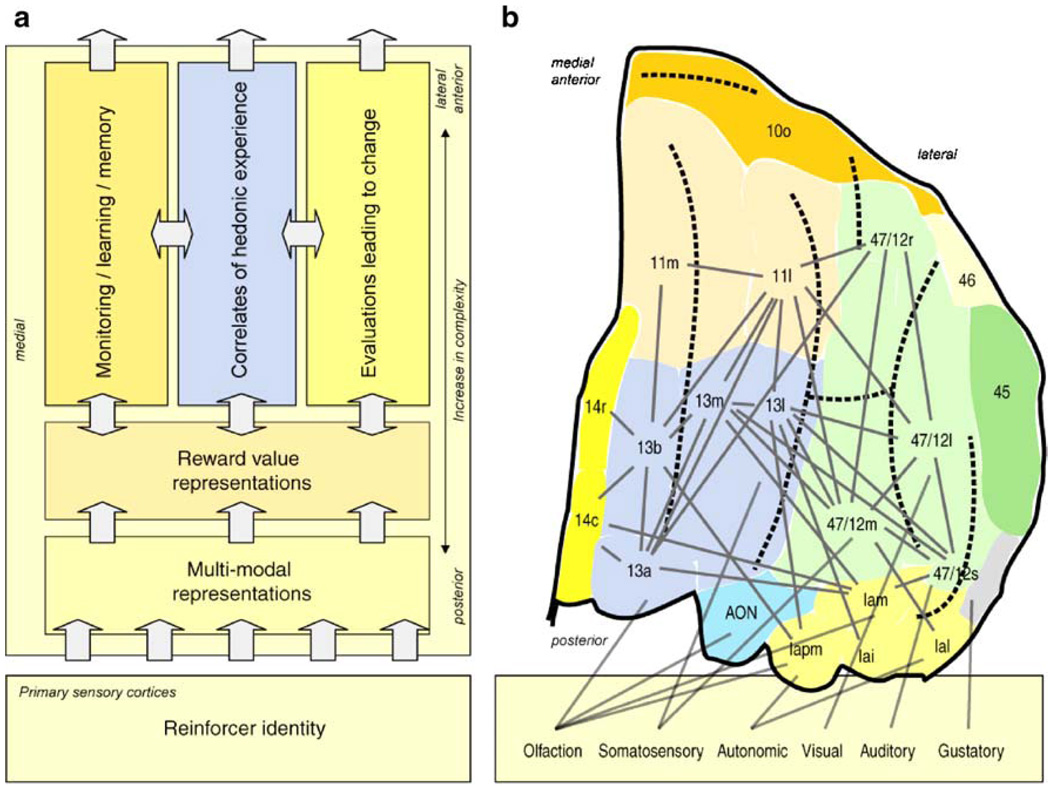Fig. 5.
Model of the functions of the orbitofrontal cortex. a The proposed model shows the interactions between sensory and hedonic systems in the orbitofrontal cortex using as an example one hemisphere of the orbitofrontal cortex (Kringelbach 2004). Information is flowing from bottom to top on the figure. Sensory information arrives from the periphery to the primary sensory cortices, where the stimulus identity is decoded into stable cortical representations. This information is then conveyed for further multimodal integration in brain structures in the posterior parts of the orbitofrontal cortex. The reward value of the reinforcer is assigned in more anterior parts of the orbitofrontal cortex from where it can then be used to influence subsequent behavior (in lateral parts of the anterior orbitofrontal cortex with connections to anterior cingulate cortex), stored for valence learning/memory (in medial parts of the anterior orbitofrontal cortex), and made available for subjective hedonic experience (in mid-anterior orbitofrontal cortex). The reward value and the subjective hedonic experience can be modulated by hunger and other internal states. b In addition, there is important reciprocal information flowing between the various regions of the orbitofrontal cortex and other brain regions as demonstrated by the detailed inputs between the different sub-regions

